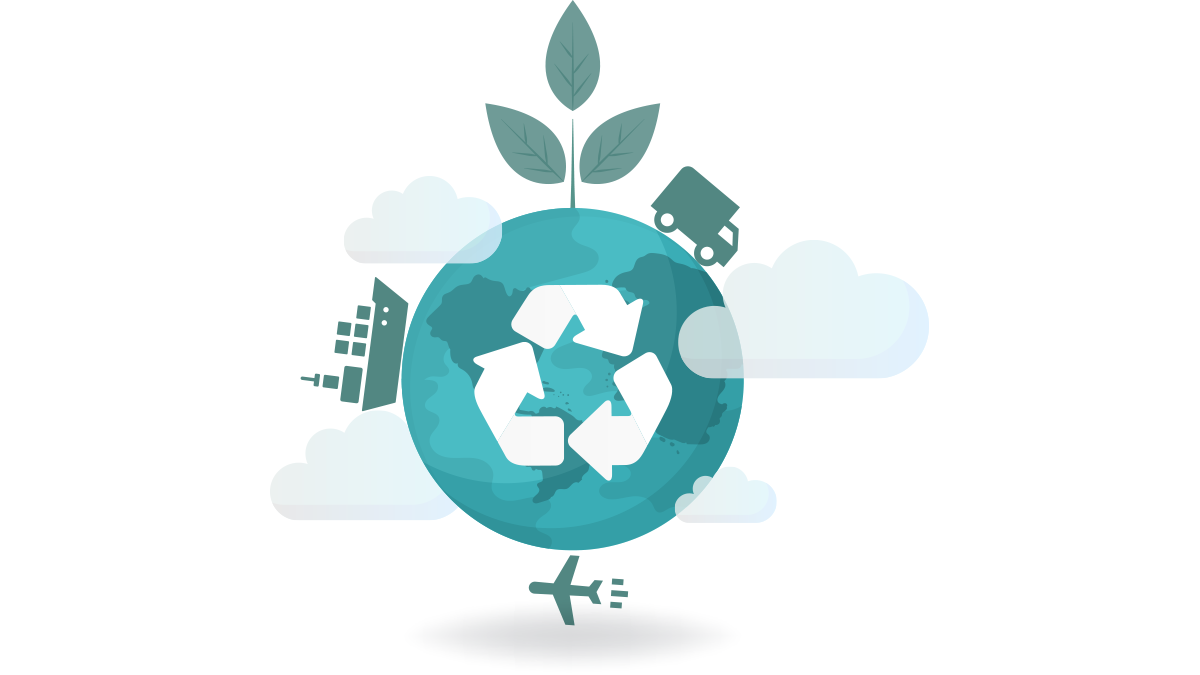Roadmap to Building Sustainable Supply Chains
In the past several decades, global trade has been a force for good. It has driven economic growth, helped millions earn a livelihood and kept the world connected through thick and thin. But all of this has also come at the cost of the environment.
The International Transport Forum estimates that about 7% of global emissions are from trade-related freight transportation. Moreover, ITF predictions indicate that these emissions will increase fourfold by 2050.
These are not small numbers. Thankfully, in recent years, the push for sustainable supply chains has significantly increased. Environmental impact has emerged as a blindspot that supply chain leaders are eager to fill in.
Tiny drops make the mighty ocean
Building a supply chain network that serves both your bottom line and the planet well, may seem like a daunting task. But you can always start small. While you may incur additional expenses when implementing sustainable initiatives, the potential long terms savings are bound to outweigh the initial spend.
By 2050, road freight is estimated to account for 56% of emissions. While air transport will account for 9%, according to ITF projections. On the other hand, the CO2 share of maritime freight is estimated to be around 32%, while that of rail freight should be at about 3%.
But on a positive note, organisations are investing in doing their bit. For instance, A.P. Moller – Maersk has accelerated its efforts to decarbonise marine operations with the launch of the world’s first carbon-neutral liner vessel in 2023.
Steady steps towards Supply Chain Sustainability
Create a Detailed Map
You can’t achieve your sustainability goals without having visibility over your supply chain. The first step in the right direction is to map your entire supply chain. A bird’s eye view will help you uncover inefficiencies and identify risks and impacts.
With your initial sustainability efforts, you can set short term goals and map how the environmental, economic and social aspects interact along each step of your supply chain operations.
The key is to first look at your own operations before you turn to your suppliers and customers. Within your four walls, is there a way to cut carbon emissions? And maybe even costs. Begin with achievable goals and prioritise changes that will lead to the highest Return On Investment (ROI).
Leverage Technology
It is technological advances that have taken supply chain management from art to science. The once-unconceivable ability to capture data, measure and analyse every process’s performance has become possible with technology.
Organisations that hope to adopt a sustainable approach should look towards deploying intelligent digital solutions. And the benefits of supply chain digitisation go way beyond just reducing paper waste. You can leverage the insights gained through extensive data analysis to unlock opportunities for sustainable processes.
Be it optimising routes, cutting down fuel consumption, reducing waste, identifying underperforming carriers, or finding better fuel alternatives, the possibilities are endless with technology.
For instance, Unilever is known to use a software tool to collect data on whether farmers in its supply chain are using sustainable practices. The MNC offers them the free tool, intending to procure 100% of its agricultural content from sustainable sources.
Collaborate to win
Solving complex issues call for collaborative efforts. Competing companies often work with each other to develop sustainable solutions that can benefit all stakeholders. On the face of it, it may be counterintuitive to work with competitors, but in the bargain, you are multiplying your efforts on sustainability practices. Besides, it can also create positive public perception and help you build credibility in the market.
Simultaneously, you can collaborate with your internal stakeholders to promote a culture of sustainability and reinforce the importance it holds.
Lastly, you can’t improve what you can’t measure
Once you set your financial goals, you closely track its performance. Similarly, tracking the progress of your sustainability initiative is an integral part of the efforts itself!
So make a plan; without a plan, your sustainability goals are just a wish. Focus on the progress and not perfection. Use the supply chain technology at hand and make decisions that positively impact your team, business and the planet.
Interested in knowing how GoComet can accelerate your sustainability initiatives through supply chain digitalisation? Connect with us today!






